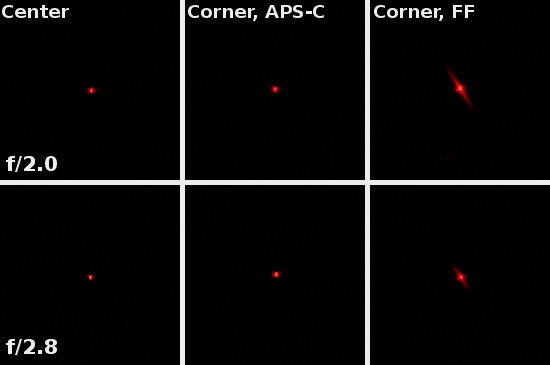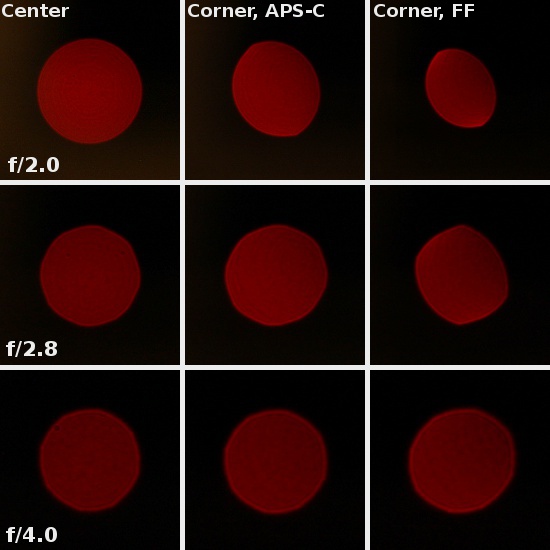Canon EF 35 mm f/2 IS USM
7. Coma, astigmatism and bokeh

The astigmatism correction can be praised, though. The average difference between horizontal and vertical MTF50 function values amounted to just 3% and it is a very good result.
Please Support UsIf you enjoy our reviews and articles, and you want us to continue our work please, support our website by donating through PayPal. The funds are going to be used for paying our editorial team, renting servers, and equipping our testing studio; only that way we will be able to continue providing you interesting content for free. |
- - - - - - - - - - - - - - - - - - - - - - - - - - - - - - - - - - - - - - - - - - - - - - - -
When it comes to the appearance of defocused circles of light we don’t have any serious reservations here. Near the maximum relative aperture the light spread is even, with the exception to the frame corner of a full frame detector where the border is noticeably lighter than the centre. From f/4.0 aperture you can notice the perimeter of the circle becomes more and more intensive.







